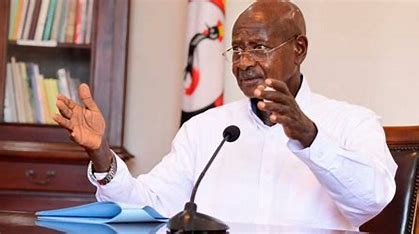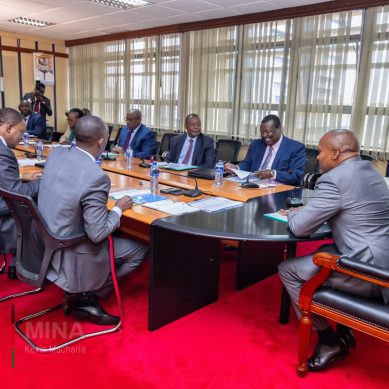
In this second instalment of my article on problem-solving, let me now introduce the term “Creative Destruction”. It was first defined by economist Joseph Schumpeter as “mutation that incessantly revolutionises the structure from within, incessantly destroying the old one, incessantly creating a new one.
When applied to human beings rather than economies, Creative Destruction is a way to incessantly stop behaviours and practices, which, when stopped, make room for new thing to emerge. This way, an act of destruction makes way for an act of creation or starting of something else, which would otherwise not be possible if we persisted with the old.
According to Wikipedia, Creative Destruction refers to demolishing (destroying) outdated past business practices and replacing them with new innovative methods. Its main purpose is to bring radical change by breaking the old, rotten management methods and installing new ones to drive the capitalist forces. Uganda’s President Yoweri Tibuhaburwa Museveni chose to go full-blown for capitalist practices but entrenched the old methods of doing business, with all the corruption associated with it.
In their article “Creative Destruction: Out with the Old, in With the New” published by Investopedia, Investopedia.com, Carol M. Kopp, Michael J. Boyle and Diana Costogliola (2023), state that Creative Destruction is the dismantling of long-standing practices in order to make way for innovation and is seen as a driving force of capitalism. They identify five key points to remember about Creative Destruction, namely:
- Creative destruction describes the deliberate dismantling of established processes in order to make way for improved methods of production.
- Creative destruction is most often used to describe disruptive technologies such as the railroads or, in our own time, the internet.
- The term was coined in the early 1940s by economist Joseph Schumpeter, who observed real-life examples of creative destruction, such as Henry Ford’s assembly line.
- Creative destruction can be seen across many different industries such as technology, retail, and finance.
- Creative destruction often has unintended consequences such as temporary losses of jobs, environmental issues, or inequity.
On his blog, Integration and Implementation Insights – A community blog and repository of resources for improving research impact on complex real-world problems, Keith McCandless (2022) addressed himself to the concept of Creative Destruction he states that the purpose of TRIZ is to achieve the following:
- Make it possible to speak the unspeakable and get skeletons out of the closet
- Make space for innovation
- Lay the ground for creative destruction by doing the hard work in a fun way
- Be used before or in place of visioning sessions
- Build trust by acting all together to remove barriers
Keith McCandless is the writer of the 2018 Creative Destruction article: What You Can Stop Doing to Make Space for Innovation (online); Making Space with TRIZ; Stop Counterproductive Activities and Behaviours to Make Space for Innovation (online); co-developer of Liberating Structures and co-author of the book The Surprising Power of Liberating Structures – Simple Rules to Unleash a Culture of Innovation (2014). He calls himself a structured improvisationalist. In his 2018 article, Creative Destruction: What You Can Stop Doing to Make Space for Innovation Keith McCandless stated that it is good to stop doing certain things, which have become common practice, thus excluding things that would give better results, and thus be superior. To help institutionalise Creative Destruction he created what he called STOP DOING LIST, which he says revolutionised his consulting practice. Below is the McCandless “Stop Doing List”, which could as well revolutionise many most professional practices, where professionalism is still valued.
Table 1. McCandless’ Stop doing list in consulting:
- Crafting visions or preferred futures
- Defining core values and ground rules
- Pushing for big centralised decisions
- Training to ensure uniformity
- Importing global best practices
- Crafting buy-in strategies
- Inviting detailed report outs
- Inviting open discussions
- Rendering definitive judgements
- Seeking consensus on a solution
- Avoiding differences (parking lots and managing disruptive people)
- Inviting experts only
- Team building with personality profiles
- Overhelping via summarising
- Controlling or redirecting flow as THE facilitator
- Using flip charts with breakout groups
- Answering questions first
- Over-explaining, which ends up unwittingly narrowing adjacent possibilities
In his 2022 article Creative Destruction, Keith McCandless suggests proceeding as follows:
- Structuring Invitation
In this three-step process, ask:
- “Make a list of all you can do to make sure that you achieve the worst result imaginable with respect to your top strategy or objective”
- “Go down this list item by item and ask yourselves, ‘Is there anything that we are currently doing that in any way, shape, or form resembles this item?’ Be brutally honest to make a second list of all your counterproductive activities, programmes or procedures”
- “Go through the items on your second list and decide what first steps will help you stop what you know creates undesirable results?”
- How space is arranged and materials needed?
- Unlimited number of small groups of 4 to 7 chairs, with or without small tables
- Paper for participants to record
- How participation is distributed
- Everybody involved in the work is included
- Everyone has an equal opportunity to contribute.
- How groups are configured
- Groups with 4 to 7 participants
- Established teams or mixed groups
- Sequence of steps and time allocation
- After introduction, three segments, 10 minutes for each segment
- Introduce the idea of TRIZ and identify an unwanted result. If needed, have the groups brainstorm and pick the most unwanted result in 5 minutes
- Each group uses 1-2-4-All (from Liberating structures) to make a first list of all it can do to make sure that it achieves this most unwanted result in 10 minutes.
- Each group uses 1-2-4-All to make a second list of all that it is currently doing that resembles items on their first list. 10 minutes
- Each group uses 1-2-4-All to determine for each item on its second list what first steps will help it stop this unwanted activity/ program/ procedure. 10 minutes.
President Yoweri Tibuhaburwa Museveni of Uganda, has given preferential love for the natural sciences and associated professions, which he believes is what is all the science there is. He does not know that science is one with three dimensions: the Humanities or Arts, the Social Science and the Natural Science. He has preferentially given higher salaries to those in the natural science dimension and associated professions at the expense of those in the Humanities (Arts) and Social Science dimensions.
The president has discouraged the universities from admitting large numbers of students and staff in the humanities and social science, completely unaware that these days the three broad areas of knowledge are interconnected in this era of new knowledge production. He is demanding innovations from his scientists and his new Ministry of Science and Technology.
It is, however, unlikely, that most of his scientists know of TRIZ and the power it unleashes in terms of innovation. Few know that for genuine innovation to begin taking place, there must be liberation of structures through integration of knowledge and practice. Instead, knowledge centres are entrenching individualistic science knowledge creation and practice to reward individual knowledge workers and practitioners.
Team science is still alien because the new knowledge production strategies of interdisciplinarity, crossdisciplinarity, transdisciplinarity and non-disciplinarity are still alien and resisted in higher education by “slow professors”. The old disciplinary knowledge generation and practices continue to be entrenched and revered to the detriment of future humanity.
- A Tell report / By Prof Oweyegha-Afunaduula, a former professor in the Department of Environmental Sciences of the Makerere University, Uganda











